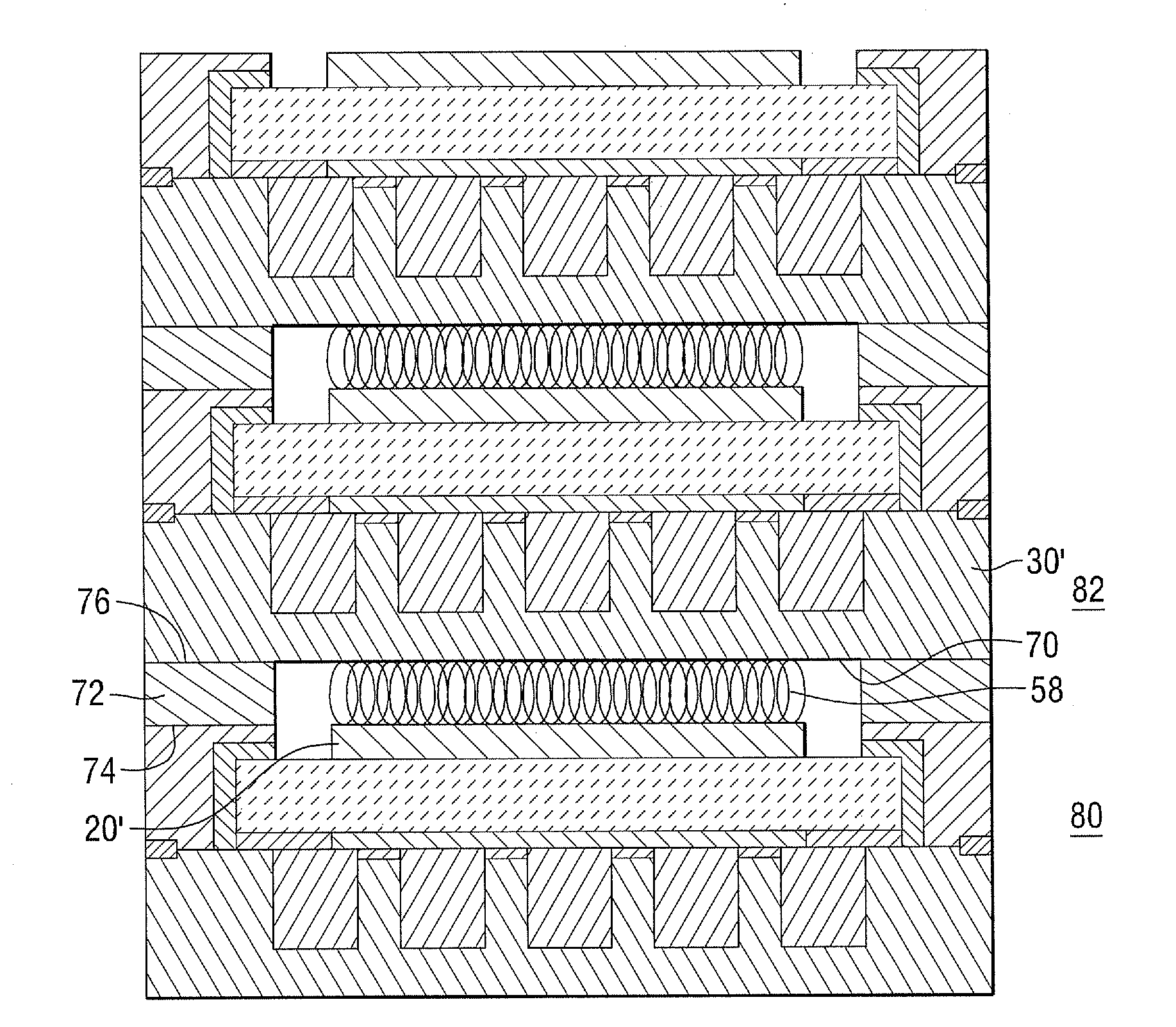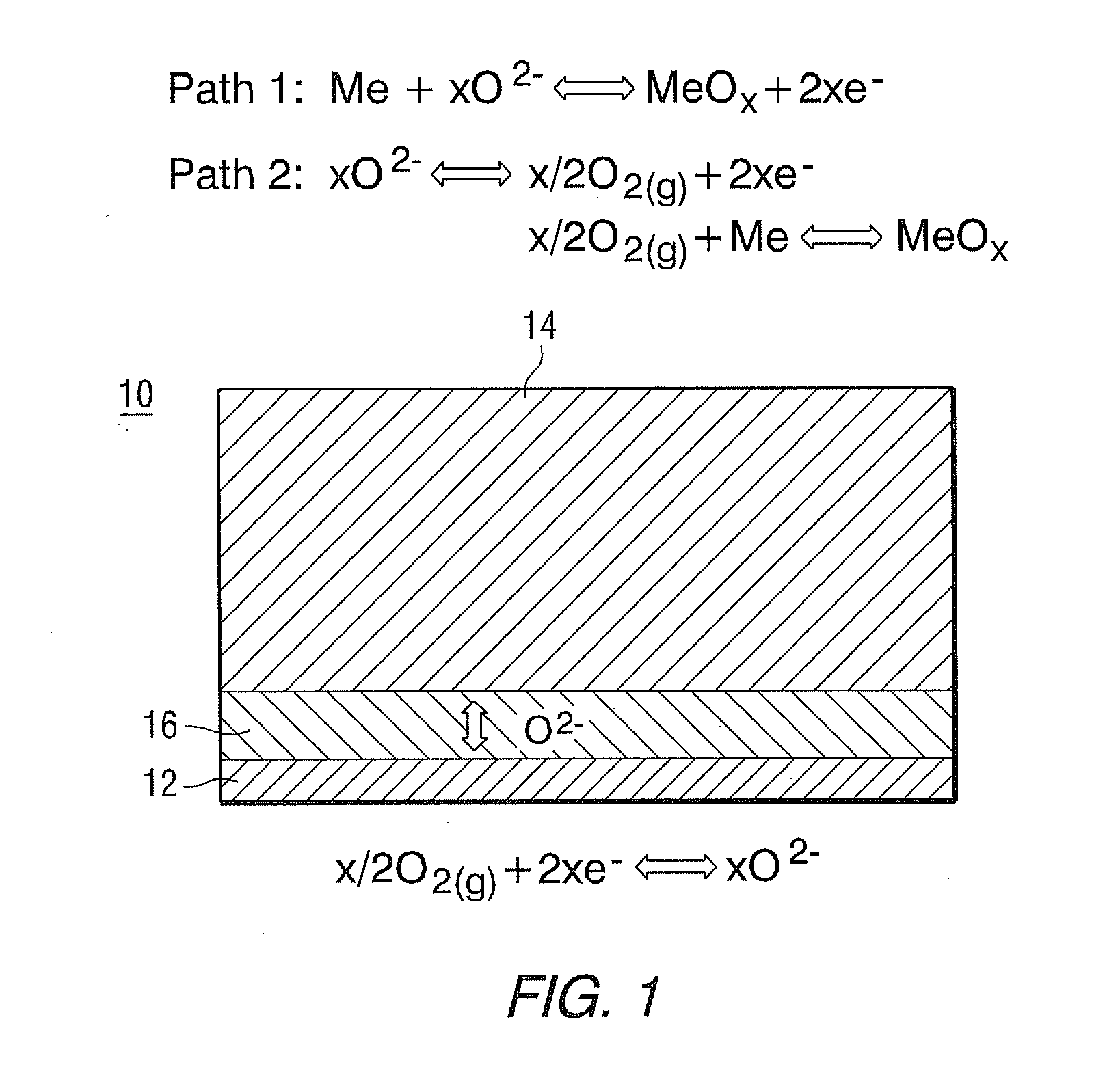Construction of planar rechargeable oxide-ion battery cells and stacks using stainless steel housing structures
a rechargeable oxide-ion battery and stainless steel technology, applied in the direction of batteries, cell components, jackets/case materials, etc., can solve the problems of affecting the efficiency of battery cells, and being almost completely displaced from the market, so as to reduce cell ohmic loss
- Summary
- Abstract
- Description
- Claims
- Application Information
AI Technical Summary
Benefits of technology
Problems solved by technology
Method used
Image
Examples
Embodiment Construction
[0030]The requirements of a ROB cell include:[0031]a) an air electrode for reversible conversion of oxygen into an oxide ion (O2−) that carries / has two electrical charges;[0032]b) an oxide-ion conductive electrolyte for transporting electrical charge in the form of O2−;[0033]c) a metal electrode where electrical charge associated with the oxide-ion is stored or released by an active metal component(s), and for accommodating the volume change associated with a metal redox reaction;[0034]d) a reliable seal separating direct contact between air and active metal; and[0035]e) cost effectiveness.
[0036]Referring now to FIGS. 2A and 2B, which show a schematic illustration of joining components (2A), and which show a finished planar ROB cell (2B). The top air electrode is shown as 20, while 22 shows a sandwiched ceramic middle electrolyte, and 24 shows the bottom metal electrode. Components 20, 22 and 24 together form a membrane assembly, generally shown as 40, best shown in FIG. 3. In FIGS....
PUM
| Property | Measurement | Unit |
|---|---|---|
| thickness | aaaaa | aaaaa |
| temperature | aaaaa | aaaaa |
| temperature | aaaaa | aaaaa |
Abstract
Description
Claims
Application Information
 Login to View More
Login to View More - R&D
- Intellectual Property
- Life Sciences
- Materials
- Tech Scout
- Unparalleled Data Quality
- Higher Quality Content
- 60% Fewer Hallucinations
Browse by: Latest US Patents, China's latest patents, Technical Efficacy Thesaurus, Application Domain, Technology Topic, Popular Technical Reports.
© 2025 PatSnap. All rights reserved.Legal|Privacy policy|Modern Slavery Act Transparency Statement|Sitemap|About US| Contact US: help@patsnap.com



